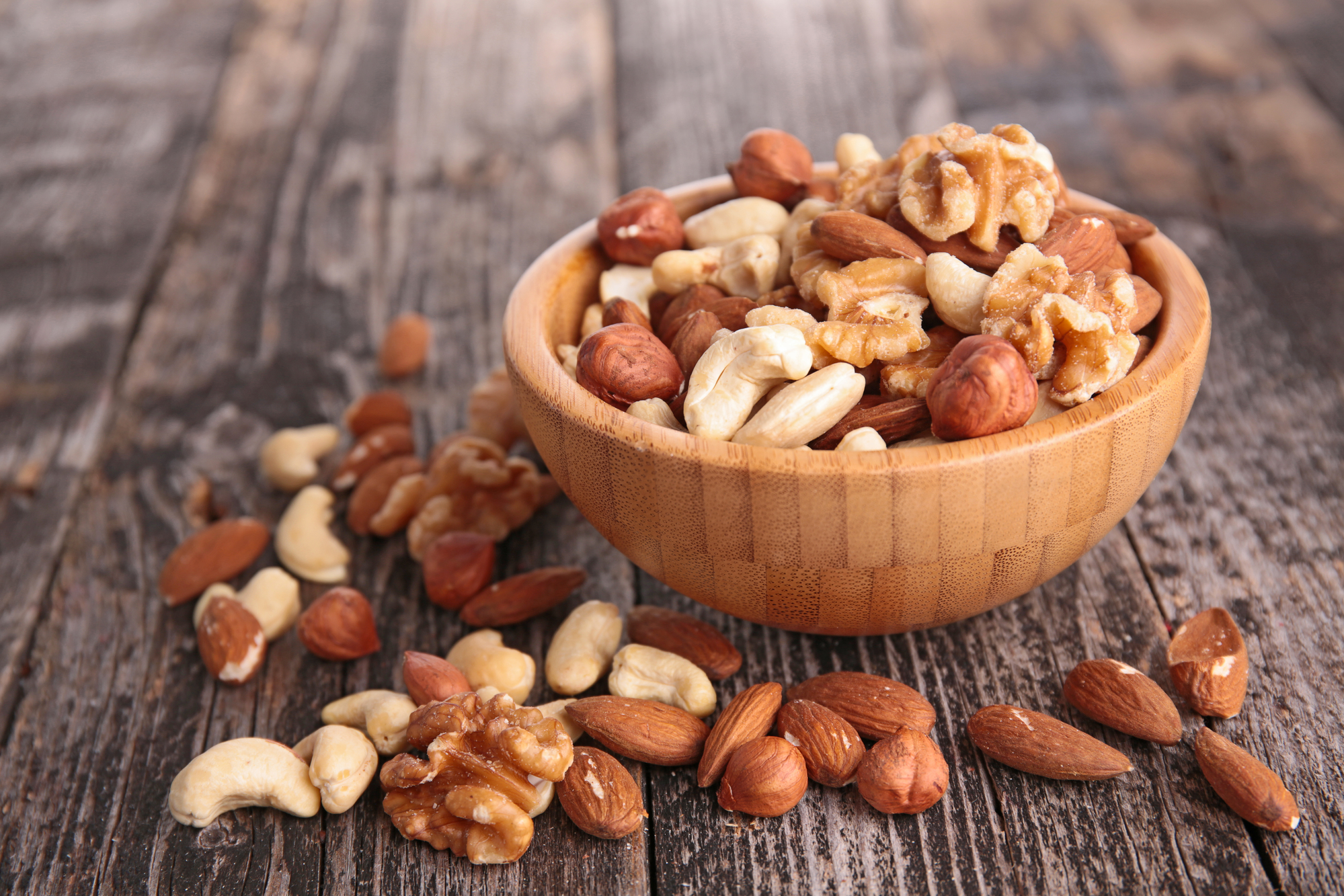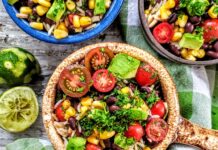Food manufacturers and marketers have known about the importance of crunchiness for consumer pleasure—and addictiveness—for decades. In the 1960s, Lay’s potato chips slogan was, “Bet you can’t eat just one.” And they almost always won that bet.
So what’s the deal? Why is crunchy food so appealing? And what are some crunchy, healthy alternatives to potato chips, Cheetos, pretzels, and other staples of the crunch-iverse?
Through much of our history, our species survived on fruits, vegetables, nuts, seeds, and probably insects. For all these foods, crispness is a reliable signifier of freshness and a better nutritional profile. And a likelihood that the food is free from harmful pathogens like molds and bacteria. So, it makes sense that our brains still rely on crackle and crunch as shorthand for “good for us.”
THE PROBLEM WITH MANY CRUNCHY SNACKS
If crunchiness was a reliable signal of healthy food back in the day, in the modern world, it’s pretty much the opposite.
1. They’re highly processed.
Not to belabour the point, but these are not whole and fresh plant foods anymore. Most snacks like potato chips are highly processed, with pretty much all fibre removed. They’re loaded with excess sodium, unhealthy fats, flavourings, and sometimes added sugars.
2. They’re addictive.
In fact, they’re engineered to be addictive. We have an inherited preference for energy-rich foods since our ancestors, who sought out and pigged out on foods high in sugar and fat, were more likely to survive famines and thus pass their genes (and preferences) on to us.
In terms of addiction, puffed snacks like Cheetos may be the perfect storm. Not only are they calorically dense, but because they “melt” so quickly and completely in our mouths, our brains register them as non-caloric and don’t send out any satiety signals.
3. They’re high in inflammatory oils.
Most crunchy snacks are high in corn oil, soybean oil, or canola oil as well. These oils are used because they’re the cheapest; however, they’re often GMO, loaded with inflammatory omega-6 fatty acids, and vulnerable to oxidation and the production of free radicals in our bodies.
4. They’re high in refined sugar and flour.
Cereals, cookies, and crackers are also high in fructose corn syrup, or sugar made from GMO beets. Add in refined flours, and these snacks hit our brains like a drug, generating powerful dopamine releases that keep us craving and addicted.
5. They’re high in sodium.
Excess sodium is another means of getting us addicted to crunchy foods. A little salt adds flavour, but the sodium content in many crunchy snacks is off the charts. A two-ounce bag of Cheetos contains 500 mg of sodium, which is about one-third of the American Heart Association’s recommended daily limit.
Too much sodium is implicated in hypertension, obesity, type 2 diabetes, and many other conditions.
6. They’re full of additives.
Oh, and let’s not forget the additives that render these snacks shelf-stable for geologic timeframes. Preservatives, colourings, and other additives of questionable safety are turning many of our snacks into time capsules—if we can keep our hands off them, that is. Even so-called “natural” additives may never have been tested for safety, and there’s plenty of reason to suspect they may not be great for us.
And although many processed crunchy snacks are originally made with plant-based foods (mainly potatoes, corn, and wheat), they lose most of their nutritional value during processing.
In general, the further a food product is from its natural form, the less it retains its healthful nutritional properties.
7. Ingredients are often low-quality
To maximize profits, manufacturers will source the cheapest ingredients for their products — many of which are low in quality and nutritional value.
Thanks to government food subsidies, the price of processed foods in the U.S. has decreased by a whopping 20-30 per cent over the last four decades.
HOW TO MAKE CRUNCHY SNACKS
You can “crunchify” some foods and snacks by how you cook them. Baking, roasting, broiling, and air-frying are common methods, although any heat that removes moisture without burning can do the trick.
To add flavour to your crunch, you can use spice mixes and seasonings. For example, bake kale and other veggies into chips in your oven without oil. Sprinkle garlic powder, smoked paprika, and/or nutritional yeast on top for an umami and cheesy taste.
You can also remove the water from fruits and vegetables by dehydrating them at low temperatures for a longer time, using your oven or a dedicated dehydrator.
You can make your own crackers, too, giving you full control over the kinds and quality of ingredients: whole grain, nut flours, high-quality oils, and zesty seasonings in place of excessive salt.
You may not think of cooked beans as crunchy, but it’s easy and quick and inexpensive to toss your chickpeas or white beans with spices and bake them until crispy. They make great snacks on their own, or as a mouth-pleasing addition to salads.
And if you’re a fan of crunchy breakfast cereals, without the processed ingredients, there’s always homemade granola, with dried oats, nuts, fruit, and seeds coated in a sweet date paste and baked until crunchy.
Crunchy snacks can be tasty and convenient. But most store-bought options can be addicting and loaded with concerning ingredients, and they lack nutrition. You can still get a satisfying crunch and crispiness without the negative effects on your health by eating a variety of whole foods, either raw or in some cases by baking or other preparation methods. Next time that crunch craving hits, reach for one of these healthy, crunchy snacks.
HEALTHY FOODS THAT ARE CRUNCHY
Remember the notion that we like crunchy foods because crunch once signified “good for us”?
Well, there are still plenty of opportunities for healthy crunch in the modern world. Here’s a short list of raw and minimally processed foods to turn to when you need a snap, crackle, or crunch in your mouth:
• Apples
• Celery
• Carrots
• Jicama
• Peppers
• Cabbage and kimchi
• Brussels sprouts
• Broccoli
• Rice cakes
• Cauliflower
• Radishes
• Water chestnuts
• Cucumbers and pickles
• Snap peas
• Nuts
• Seeds
• Popcorn (only healthy if you don’t put unhealthy things on it!)
You may also like: Raw or Cooked Vegetables, Which is Better?

Read This Story in Our 2023 Fall Fitness & Food Issue
Featuring this year’s winners of the Amazing Race Canada, Ty Smith and Kat Kastner on our cover. Inside our latest issue, you’ll find all the inspiration you need to carry you through the autumn season. From delicious high-protein recipes and how to resist the crunch of potato chips to running through the high peaks of the Colorado Rockies and the latest in nutrition and fitness, these pages are packed with expert knowledge and advice.
















